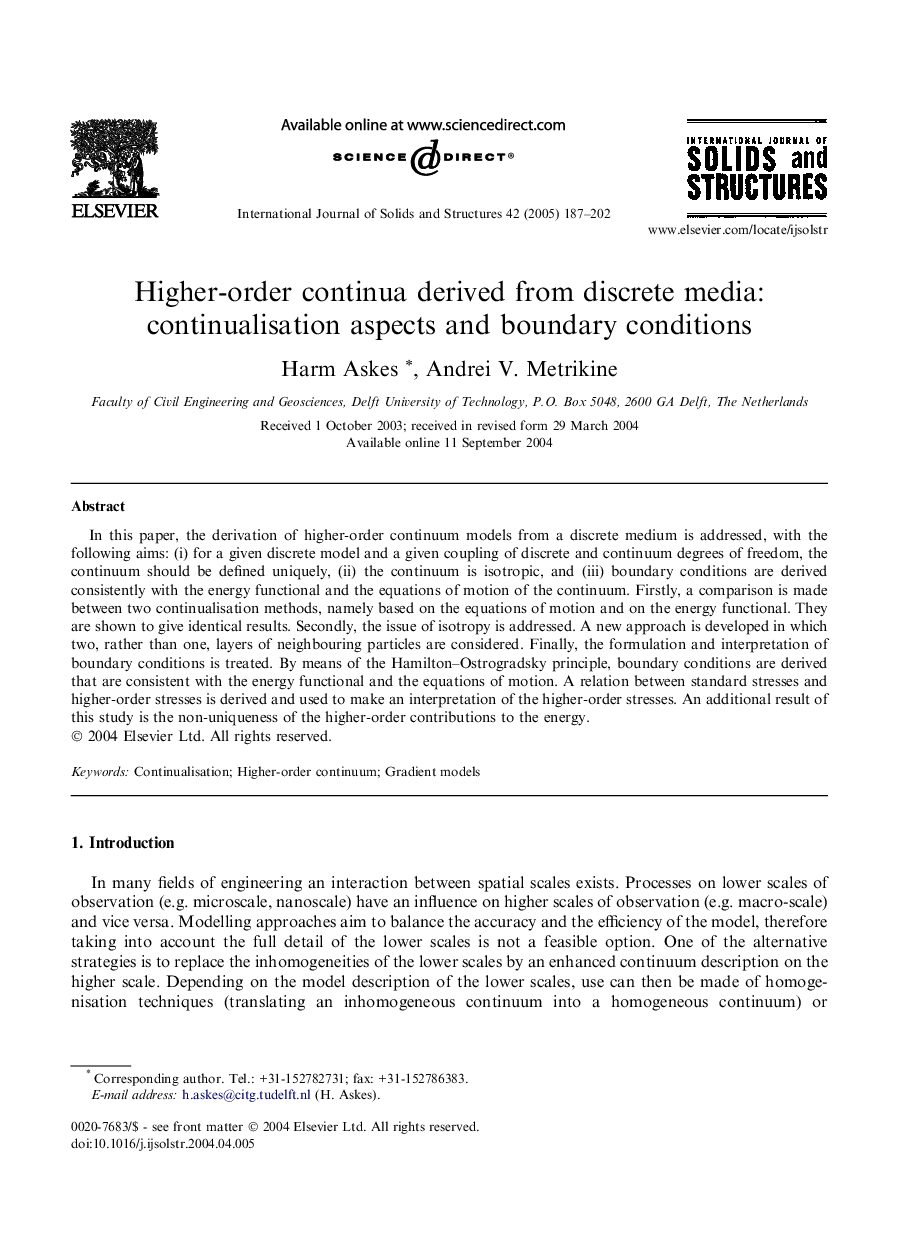| Article ID | Journal | Published Year | Pages | File Type |
|---|---|---|---|---|
| 9639792 | International Journal of Solids and Structures | 2005 | 16 Pages |
Abstract
In this paper, the derivation of higher-order continuum models from a discrete medium is addressed, with the following aims: (i) for a given discrete model and a given coupling of discrete and continuum degrees of freedom, the continuum should be defined uniquely, (ii) the continuum is isotropic, and (iii) boundary conditions are derived consistently with the energy functional and the equations of motion of the continuum. Firstly, a comparison is made between two continualisation methods, namely based on the equations of motion and on the energy functional. They are shown to give identical results. Secondly, the issue of isotropy is addressed. A new approach is developed in which two, rather than one, layers of neighbouring particles are considered. Finally, the formulation and interpretation of boundary conditions is treated. By means of the Hamilton-Ostrogradsky principle, boundary conditions are derived that are consistent with the energy functional and the equations of motion. A relation between standard stresses and higher-order stresses is derived and used to make an interpretation of the higher-order stresses. An additional result of this study is the non-uniqueness of the higher-order contributions to the energy.
Related Topics
Physical Sciences and Engineering
Engineering
Civil and Structural Engineering
Authors
Harm Askes, Andrei V. Metrikine,
